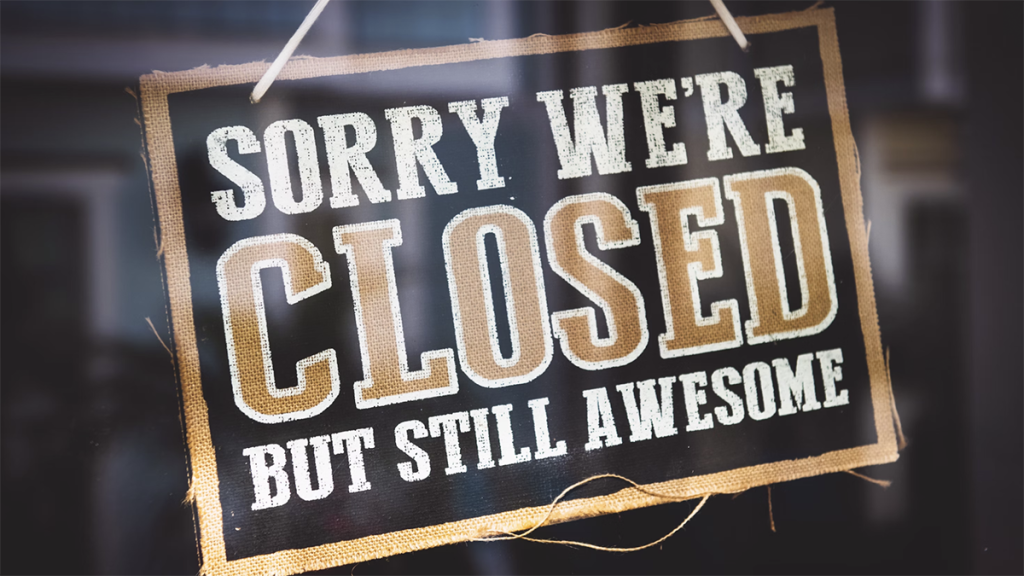
Photo: Tim Mossholder | Unsplash, Instagram @timmossholder
How to take a collective break this winter
By resting when our audience rests, we ensure we can better meet their needs for the rest of the year
With the end of the year approaching, many of our friends in journalism are facing the loathsome task of trying to find reluctant volunteers to work over the upcoming holiday closures. But for a lot of newsrooms that don’t publish daily news or employ hundreds of people, there’s another option: give everyone a break.
At The Appeal, we close down twice a year: For one week over summer, and two weeks over winter. And we’re in good company. Scalawag does it. So does The Markup.
Here’s why you should consider it, and how to implement it, in your newsroom:
Why we close
We all know the feeling right before going on vacation: There are a million things to do and not enough time to do them, so you end up working overtime just to be able to take time off. Then, when you’re back, the emails in your inbox have multiplied like a wet Gremlin and there are even more Slack messages you need to catch up on. It’s exhausting.
Don’t get us wrong, we’re big fans of vacation and highly encourage our team to take at least three weeks off a year. But this kind of individual rest comes with the extra burden of making sure you’re setting your team up for success while you’re gone.
But when an entire office closes for collective rest, it’s completely different. You may have a couple of things that need to be done for stories or external partners before you go, but, for the most part, everyone sets the same out-of-office, deletes Slack from their phones, and just…stops. No handover to colleagues, no checking messages while lying on a beach, and no missed work to follow up on when you get back. It’s actually restful.
At The Appeal, we’re big on living our values, so we take our commitment to “Self- and Community Care” seriously. This means the sacrifices involved in collective rest (yes, maybe not publishing that breaking story) are worth it to us for the health of our team and the sustainability of our newsroom. By taking planned intentional breaks, we can help prevent burnout and turnover.
How summer and winter breaks work
As with anything in a business, you can’t just make a decision and hope it turns out for the best, and closing the doors even for a few days is just the same. We’re incredibly thankful to Your Other Half, who helped us think through how to carefully implement short-term breaks and successfully lead our team through them.
Here are our biggest takeaways:
- Think about timing. Think about when your audience is off and what your team’s personal needs are when selecting break times. We usually take our summer break at the end of July/ beginning of August when our traffic begins to dip, parents need time with their kids before school starts up again, and we feel ourselves starting to descend into burnout mode.
- Remember, these can change each year as your audience grows and your team changes. We select closure dates in January each year.
- Avoid combining collective and individual rest. If staff come back from collective rest and need to cover for colleagues, it can negate the rest they gained over the break. At The Appeal, planned absences cannot ordinarily be added onto the winter or summer office closures.
- Prepare. In the one to two months before the closure, make sure the break is on your team’s minds: bring it up at meetings, ensure the editorial, newsletter, and social calendars reflect that a break will be happening, and make sure the workflows have taken this into account.
- Tell your audience (and your freelancers and other partners!). Write an out-of-office message all staff can add to their emails and tweet out a message about your closure. If you want, you could even put a small message on your site.
- Don’t add more work: What’s critical to collective rest is not making more work for yourselves. Worried about not publishing articles or a newsletter for a week? Don’t overcompensate, just manage expectations. We make it clear to our audience when we’re taking a break and we’ve never had a single reader express disappointment or indignation.
But what about the work?
Traffic in many newsrooms dips over the holidays and at the height of summer. Recognizing that no one was clamoring for our work during this time helped us realize we would not fail to serve our audience by taking care of ourselves. By resting when our audience rests, we ensure we can better meet their needs for the rest of the year.
Realistically, much of the pressure we feel to maximize productivity at the expense of well-being is internal, not external. The Appeal benefits immensely from having an incredibly driven team with an unparalleled work ethic. But that means we have to take extra care to maintain the health of our team.
We build time into our newsroom’s workflow to prepare for closures so people actually have the time and space to rest without worrying if everything got done.
Here are some tips for how we make sure to cover your bases in advance:
- Audience engagement: Harness those social scheduling tools! The end of the year is a time of reflection, so share old stories, create lists, and publish wrap-ups. Your newsroom undoubtedly has a wealth of evergreen stories or important news stories that are still impacting people—just make clear in the social text that the piece was published at X time and you’re good to go.
- Fundraising: These emails can be scheduled too! You can write them in a way that they don’t need to be updated before sending or, at most, only take someone five minutes of work before hitting send.
- Editorial: Plan your calendar around your breaks! Set deadlines for your team and freelancers so it’s clear that if copy isn’t turned in by a certain date, a story won’t be published until after the break.
- For breaking stories: This is an opportunity to do better journalism. Maybe you don’t need to cover the event itself, but your newsroom can own the second-day coverage, bringing fresh ideas and analysis that will serve your audience far better in the long run.
Enjoy the break
Now that you’ve put in the work to ensure a restful time off for your team, enjoy! Grab a book, a plane ticket, or a recipe, and indulge in your favorite self-care practices. We all do the best work when we are the best versions of ourselves, so invest in all the things that brighten your day and fill your cup.
In the spirit of this column, we wish you a restful winter break. We’ll be back with more tips and insight into The Appeal in 2024!


Comments